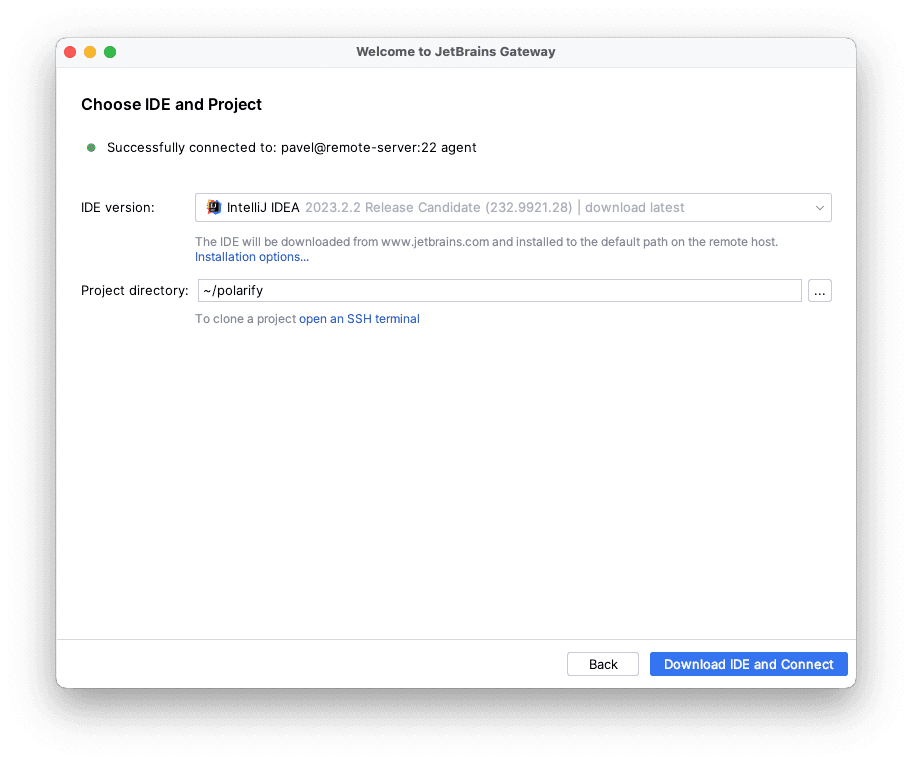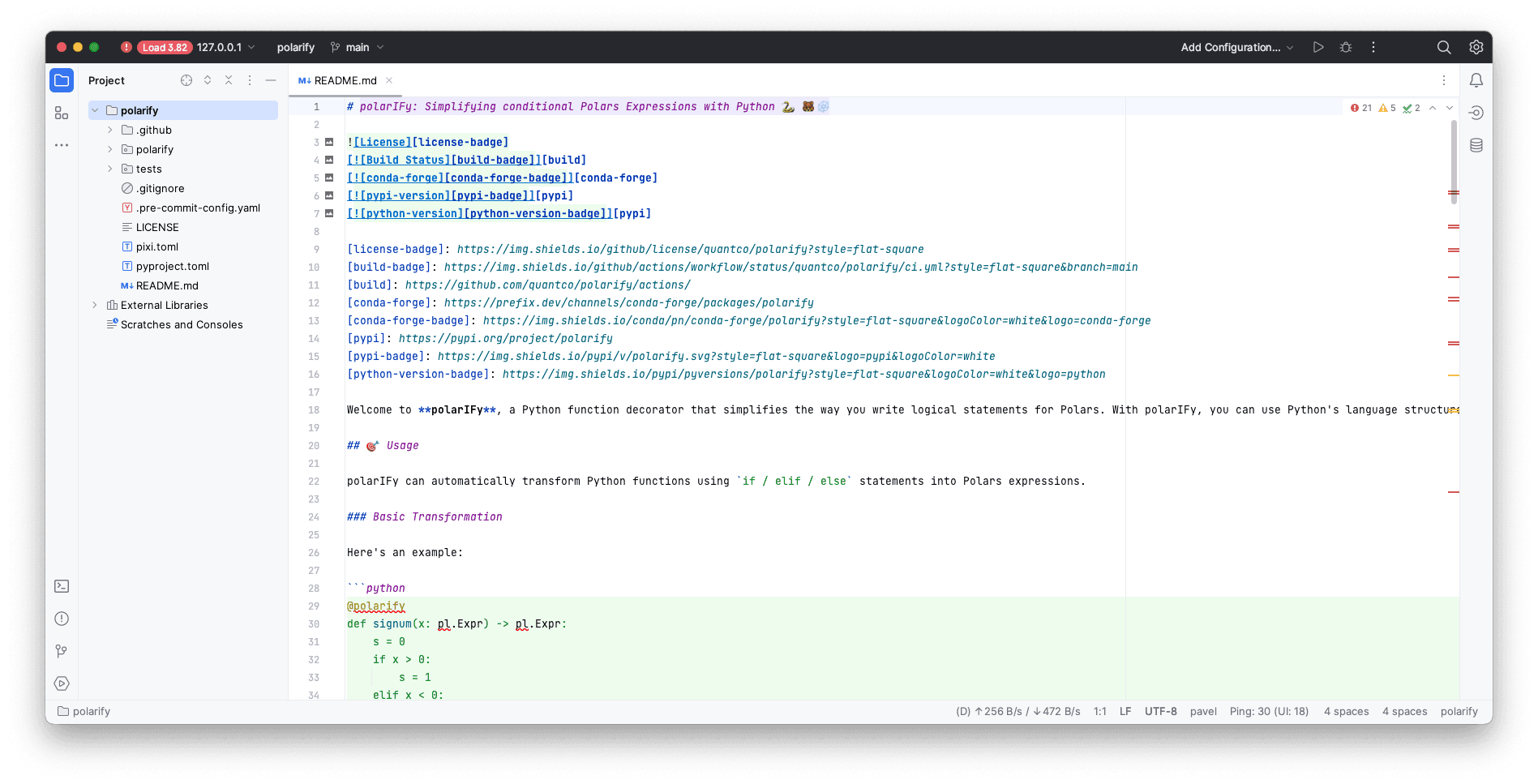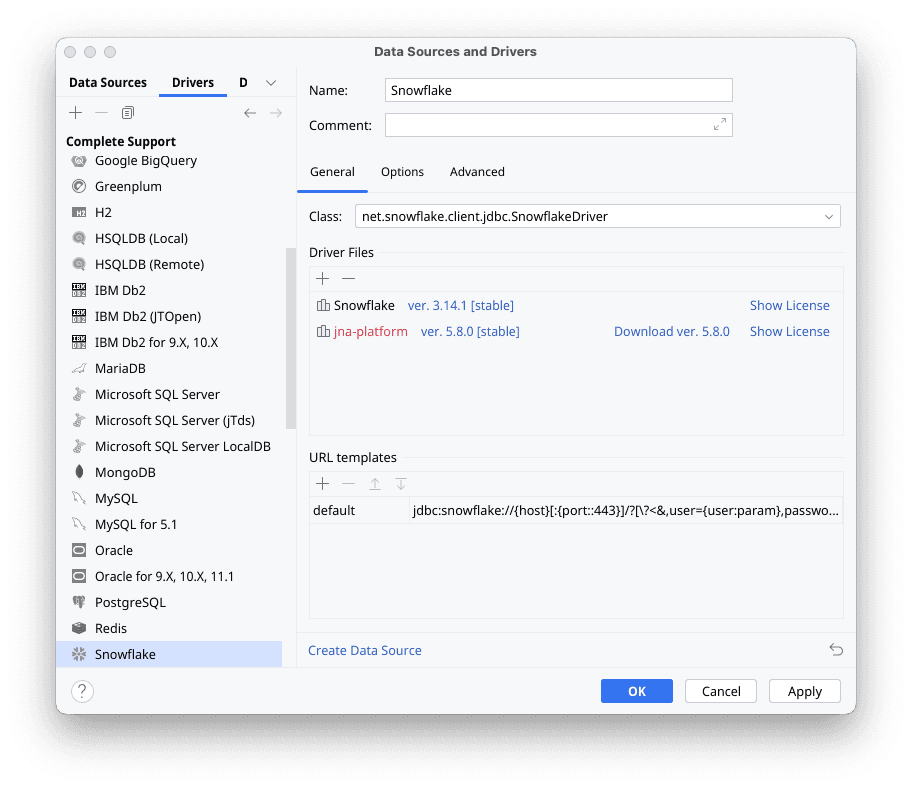
Deploying JetBrains Gateway in a corporate world
When you have worked in a corporate environment, you know that deploying stuff can be challenging. During my work, I deployed JetBrains Gateway in a corporate environment. In this article, I will describe how I did it and what I had to consider.
What is JetBrains Gateway?
JetBrains Gateway is a piece of software that allows you to remotely access your JetBrains IDEs, similarly to how you use VSCode Remote Development. With this, you can run your favorite JetBrains IDEs like IntelliJ IDEA or PyCharm in ✨ the cloud ☁️✨.
How it usually works
In an open environment that you have control over, the installation of JetBrains Gateway is pretty straightforward.
- install the Gateway Client on your local machine
- add an SSH connection to your server that should run the IDE
- click on
Check Connection and Continue - select the IDE you want to install as well as the remote project directory
- click
Download IDE and Connect - and you're done 🎉


Taking a closer look
What happens under the hood when you click on Download IDE and Connect is that the Gateway application on your local machine tries to connect via SSH to the remote server and then downloads your selected IDE from JetBrains' servers. This IDE is actually the exact same version that you would download as an end-user from JetBrains' website when you want to install PyCharm1 or IntelliJ IDEA2 on your local machine.
If you look closely into the downloaded file, you will see that there is a bin directory that contains a remote-dev-server.sh script. This script is (more or less) what's executed on the remote server after your IDE is downloaded.
Corporate setup
In a corporate environment, you usually have to deal with proxies and firewalls. In my case, I had the situation that in the environment to deploy Gateway in was a docker container which I only had SSH access to. The docker container itself had no internet access, but I could access the internet from the host machine.
So I had to download the IDE from my local machine and then copy it into the remote server.
scp pycharm-professional-2023.2.1.tar.gz remote-server:~/
ssh remote-server
tar xzf pycharm-professional-2023.2.1.tar.gz -C /opt
Additionally, the only directory that was persisted in the docker container was my home directory which was mounted from a network share. PyCharm (and probably the other JetBrains IDEs too) requires a persistent directory to store its configuration and caches. The configuration is stored in in ~/.config/JetBrains by default and the caches are stored in ~/.cache/JetBrains. Unfortunately, PyCharm does not like working on a network share at all3, so I had to find a way to store the configuration and caches in a local directory instead. Creating a symlink from the network share to a local directory fixed the issue.
ln -s /tmp/jetbrains-cache ~/.cache/JetBrains
Since these are only cache files, we also won't lose any meaningful data if the container is restarted.
So when you run this script, you will see some logging and after some time, you will see the following message:
$ REMOTE_DEV_NON_INTERACTIVE=1 /opt/pycharm-2023.2.1/bin/remote-dev-server.sh run \
"${project_dir}"
--ssh-link-port 2222 \
--ssh-link-host remote-server \
--ssh-link-user remote-user \
-l 0.0.0.0
...
*********************************************************
Join link: tcp://0.0.0.0:5990#jt=...
Http link: https://code-with-me.jetbrains.com/remoteDev#idePath=%2Fopt%2Fpycharm-2023.2.1&projectPath=%2Fhome%2Fuser%2Fproject&host=remote-server&port=22&user=user&type=ssh&deploy=false&newUi=true
Gateway link: jetbrains-gateway://connect#idePath=%2Fopt%2Fpycharm-2023.2.1&projectPath=%2Fhome%2Fuser%2Fproject&host=remote-server&port=22&user=user&type=ssh&deploy=false&newUi=true
*********************************************************
...
You can now either open the http link in your browser which will open the JetBrains Gateway app for you or you can use the Gateway link and paste it into the Gateway app directly4.
And you're done! 🚀
Plugins and Drivers
What makes the JetBrains IDEs so powerful is the huge ecosystem of drivers and plugins. These drivers and plugins are usually downloaded from the internet when you want to install them. In my case, I had no internet access, so I had to download them manually and copy them into the container.
Drivers
Drivers are usually project-specific and go into ~/.config/JetBrains. For example, when I want to download the Snowflake driver for a project in ~/project, the snowflake-jdbc-3.13.27.jar driver would need to go into
~/.config/JetBrains/RemoteDev-PY/_home_user_project/net/snowflake/snowflake-jdbc/3.13.27/snowflake-jdbc-3.13.27.jar
Which jar exactly is needed depends on the driver you want to install. You can find the exact name of the jar from the IDE error logs. These drivers are usually downloaded from maven central. If your corporate environment has a maven mirror like Nexus or Artifactory, you could maybe even download the driver from there instead. You can also provide your IDE a custom JAR by clicking on the plus sign in the "Driver Files" section.

Plugins
Plugins can be downloaded manually from the JetBrains Website. For example, if you want to install the GitToolBox plugin, you can just search for it on the website and download it for your IDE version. The downloaded zip needs to be extracted to ~/.config/JetBrains/RemoteDev-PY/_home_user_project/plugins/gittoolbox/.
You need to differentiate between host plugins and client plugins. Host plugins are installed on the remote server and client plugins can be installed on the local machine (mostly theme-related plugins). For example, GitToolBox is a host plugin, but IdeaVim is a client plugin.
Putting it all together
I'd like to end with a short summary of the steps that are needed to deploy JetBrains Gateway in a corporate world.
- install the Gateway Client on your local machine
- download your ide from JetBrains' website
scp <ide>-<version>.tar.gz remote-server:~/- extract the tarball to your installation directory
ln -s /tmp/jetbrains-cache ~/.cache/JetBrains(if$HOMEis a network share)- add drivers and plugins to
~/.config/JetBrains/RemoteDev-PY/_home_user_project/5 (if needed) - if you need a proxy on your local machine, configure it in the Gateway app
- run the
remote-dev-server.shscript on the remote server - ???
- profit!!! 💸
Footnotes
jetbrains.com/pycharm/download?section=linux or download.jetbrains.com/product?code=PY&latest&distribution=linux ↩
jetbrains.com/idea/download/?section=linux or download.jetbrains.com/product?code=IU&latest&distribution=linux ↩
In corporate environments, it is usually the case that you cannot access the internet from your local machine directly but through a proxy. You may need to configure the proxy settings in the Gateway app. px-proxy might come in handy if you use NTLM authentication since JetBrains products cannot handle this natively. ↩
You need to update the paths accordingly to your project directory. Also,
RemoteDev-PYmight be different for you depending on the IDE you want to use. ↩